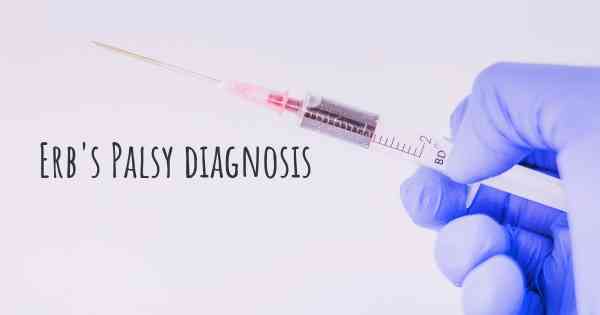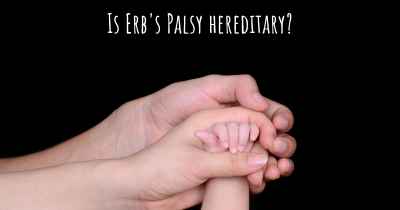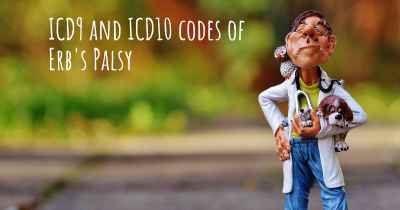How is Erb's Palsy diagnosed?
See how Erb's Palsy is diagnosed. Which specialists are essential to meet, what tests are needed and other useful information for the diagnosis of Erb's Palsy

Diagnosis of Erb's Palsy
Erb's Palsy is a condition that affects the nerves in the upper arm, causing weakness or paralysis. It is typically caused by injury to the brachial plexus, a network of nerves that control movement and sensation in the arm. Diagnosing Erb's Palsy involves a combination of medical history, physical examination, and diagnostic tests.
Medical History
The first step in diagnosing Erb's Palsy is obtaining a detailed medical history of the patient. The healthcare provider will ask questions about the symptoms, such as weakness or lack of movement in the affected arm, and any known risk factors or events that may have caused the injury. This information helps in understanding the potential cause and severity of the condition.
Physical Examination
A thorough physical examination is crucial in diagnosing Erb's Palsy. The healthcare provider will assess the range of motion, strength, and sensation in the affected arm. They will look for signs of muscle weakness, abnormal posture, and any visible deformities. The examination may involve gentle manipulation of the arm to evaluate the response and identify specific areas of weakness or restricted movement.
During the physical examination, the healthcare provider may perform the following tests:
1. Moro Reflex Test
The Moro reflex test is conducted by gently startling the baby to observe their response. In infants with Erb's Palsy, the affected arm may not move or show a weaker response compared to the unaffected arm.
2. Grip Strength Test
The grip strength test assesses the ability to grasp objects. The healthcare provider may ask the patient to hold onto their finger or a small object to evaluate the strength and coordination of the hand and fingers.
3. Range of Motion Test
The range of motion test involves moving the affected arm in different directions to assess the extent of movement and any limitations. The healthcare provider will carefully observe the patient's ability to perform various movements, such as lifting the arm, rotating the shoulder, or bending the elbow.
Diagnostic Tests
In addition to the physical examination, diagnostic tests may be ordered to confirm the diagnosis of Erb's Palsy and assess the extent of nerve damage. These tests help in determining the most appropriate treatment plan. Some common diagnostic tests include:
1. Electromyography (EMG)
EMG is a test that measures the electrical activity of muscles and nerves. It can help identify the location and severity of nerve damage in Erb's Palsy. During the test, small electrodes are placed on the skin or inserted into the muscles to record the electrical signals.
2. Nerve Conduction Study (NCS)
NCS is often performed alongside EMG to evaluate the speed and strength of nerve signals. It involves applying small electrical shocks to the nerves and recording the response. This test helps determine if the nerves are functioning properly and if there is any nerve damage.
3. Magnetic Resonance Imaging (MRI)
MRI uses powerful magnets and radio waves to create detailed images of the body's structures. It can provide a clear view of the brachial plexus and help identify any abnormalities or injuries. MRI is particularly useful in cases where surgical intervention may be required.
Note: The specific diagnostic tests recommended may vary depending on the individual case and the healthcare provider's judgment.
Consultation with Specialists
In some cases, the healthcare provider may refer the patient to a specialist, such as a neurologist or orthopedic surgeon, for further evaluation and treatment. These specialists have expertise in diagnosing and managing conditions related to the nerves and musculoskeletal system.
In conclusion, Erb's Palsy is diagnosed through a combination of medical history, physical examination, and diagnostic tests. The medical history helps identify potential causes and risk factors, while the physical examination assesses the range of motion, strength, and sensation in the affected arm. Diagnostic tests such as EMG, NCS, and MRI may be ordered to confirm the diagnosis and evaluate the extent of nerve damage. Consulting with specialists may also be necessary for comprehensive evaluation and treatment.
Posted Mar 12, 2017 by Mari-anne 1000








